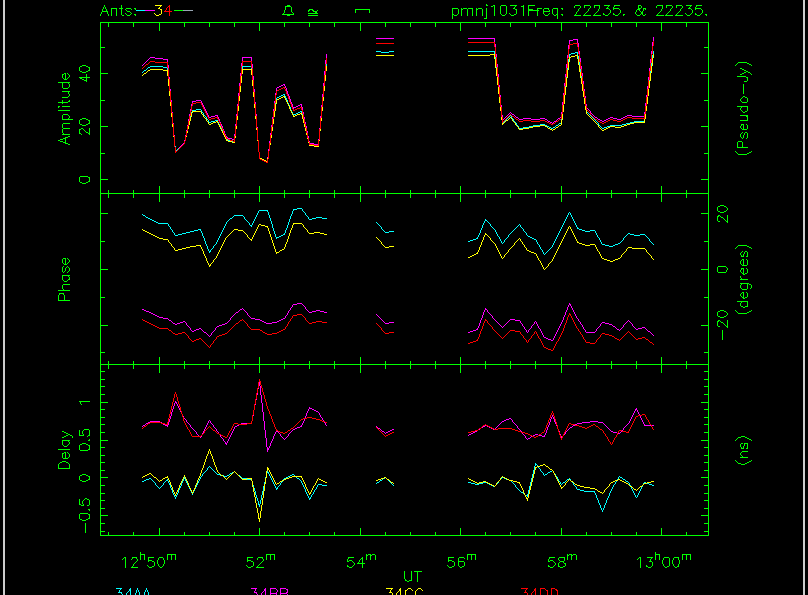Holography mode in action

The differences between the amplitudes of the +az/-az and +el/-el sub-scans for the two antennas are clearly visible in the first pointing pattern - the implied pointing offsets were over 25" for both antennas (this was actually because the source coordinates were wrong, but it does illustrate the algorithm well...). Note also that the three on-source sub-scans were all consistent; if this is not the case, it most likely implies atmospheric attenuation, and reference pointing is probably not possible.
The second pointing scan was done to check the derived offsets. The +az/-az and +el/-el sub-scan amplitudes are much more consistent.
Notes:
· VIS sometimes flags half of the pointing scans as off-source (but I might have fixed this - DPR 02 Mar 2001). To see them, you have to:VIS> offsource off
· You can do a pointing scan with SCTYPE=POINT and POINTING=OFFSET to test the integrity of the pointing solution. In this case, CATAG will calculate the offsets from the current pointing solution, but it won't apply them. In the above example, the rms of the pointing errors with respect to the OFFSET solution were found to be 3".
Original: Dave Rayner (2001)
Modified: Bob Sault (6-Sep-2003)
